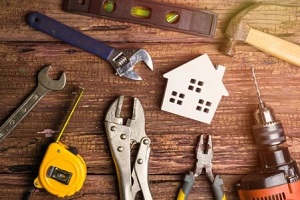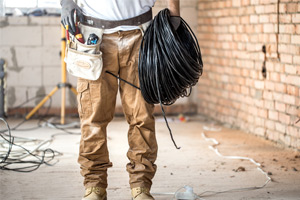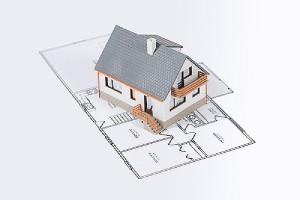The Ultimate Guide to Chimney Repair: Keeping Your Home Safe and Efficient
 Are you worried about your chimney’s safety and efficiency? Don’t worry! This guide will help you with chimney repair. A well-maintained chimney keeps your home safe and energy-efficient.
Are you worried about your chimney’s safety and efficiency? Don’t worry! This guide will help you with chimney repair. A well-maintained chimney keeps your home safe and energy-efficient.
Whether you have a masonry or metal chimney, this guide covers everything. We will discuss common chimney problems like cracks, leaks, and blockages. You’ll learn how to identify and fix them. Regular chimney inspections and maintenance are important to avoid expensive repairs.
We will explain different types of chimney liners and why they are important. Also, we’ll share tips on choosing the right chimney repair professional and avoiding scams.
With this guide, you will know how to keep your home safe, efficient, and cozy for years. Let’s get started!
Importance of Chimney Maintenance
Maintaining your chimney is crucial for safety and efficiency. A good chimney vents smoke and gases properly. It also prevents hazards like chimney fires and carbon monoxide buildup.
Regular maintenance extends your chimney’s lifespan and reduces repair costs. Chimneys can develop cracks, deterioration, and creosote buildup. These issues increase fire risk and reduce energy efficiency. They can also cause structural damage to your home.
Schedule annual chimney inspections and perform routine cleaning and minor repairs. This helps prevent risks and ensures your chimney works well. Proper maintenance also improves your home’s energy efficiency.
Signs of Chimney Damage
 Look for these signs to spot chimney damage:
Look for these signs to spot chimney damage:
- Cracks or flaking masonry: Caused by weather, age, or structural issues.
- Excessive soot or creosote: This buildup increases fire risk.
- Water stains or leaks: Can lead to mold growth and structural issues.
- Damaged chimney cap or crown: Allows water and debris into the flue.
- Blockages in the flue: Debris or animal nests can block venting.
- Unusual odors or smoke: Could mean a damaged liner.
Regular inspections help prevent serious problems and improve efficiency.
Common Chimney Problems
Chimneys can have various problems, such as:
- Cracked or deteriorating masonry: Bricks and mortar can crack and deteriorate.
- Creosote buildup: Increases fire risk if not cleaned.
- Leaks and water damage: Water can cause mold and structural issues.
- Obstructions and blockages: Debris or nests block proper venting.
- Damaged chimney liners: Liners protect masonry and ensure safe venting.
- Insufficient chimney height: Can cause smoke and odor issues.
Address these problems promptly to maintain safety and efficiency.
DIY Chimney Repair vs. Hiring a Professional
 Deciding between DIY repairs and hiring a professional can be tough. Minor maintenance can be DIY, but structural repairs need experts.
Deciding between DIY repairs and hiring a professional can be tough. Minor maintenance can be DIY, but structural repairs need experts.
DIY repairs seem cost-effective but can be risky and challenging. Working on chimneys can be dangerous. Improper repairs can cause further damage or safety hazards.
Professionals offer expertise, proper tools, and compliance with safety standards. They provide warranties and comprehensive assessments. Hiring a professional may cost more upfront but ensures safety and quality.
Chimney Repair Process: Inspection and Assessment
A thorough inspection is the first step in chimney repair. A professional will:
- Examine the chimney’s exterior for damage.
- Inspect the interior with cameras and tools.
- Check structural integrity for cracks and spalling.
- Assess the chimney’s functionality.
Based on the inspection, the professional will recommend repairs and provide an estimate. This ensures the work addresses your chimney’s needs.
Chimney Repair Options
 Depending on the inspection, repairs may include:
Depending on the inspection, repairs may include:
- Masonry repairs: Repointing, brick replacement, or parging.
- Chimney liner replacement: Improves safety and efficiency.
- Chimney cap installation: Prevents water, debris, and animals from entering.
- Flue cleaning: Removes creosote and debris to reduce fire risk.
Work with a reputable repair company for quality and compliance with building codes.
Chimney Repair Costs and Budgeting
Chimney repair costs vary based on damage and required materials. Factors include:
- Damage extent: Minor repairs are cheaper than structural ones.
- Materials and labor: Costs vary by quality and local market.
- Accessibility: Hard-to-reach chimneys may cost more.
- Permits and inspections: Some repairs need permits, adding to the cost.
Get multiple quotes and set aside a contingency fund for unexpected issues.
Preventive Measures for Chimney Maintenance
 Proactive maintenance extends your chimney’s lifespan and prevents costly repairs. Key measures include:
Proactive maintenance extends your chimney’s lifespan and prevents costly repairs. Key measures include:
- Annual inspections: Identify and address issues early.
- Regular cleaning: Remove creosote and debris yearly.
- Cap and crown maintenance: Prevent water and debris entry.
- Prompt minor repairs: Fix small issues before they escalate.
- Proper use of appliances: Follow manufacturer instructions to prevent issues.
These steps keep your chimney safe and efficient.
Finding a Reliable Chimney Repair Company
To find a reliable repair company:
- Check certifications and licenses: Ensure they are licensed and certified.
- Verify experience: Look for companies with years of experience.
- Request references and reviews: Check their reputation.
- Get multiple quotes: Compare prices and services.
- Ask about warranties: Ensure they offer guarantees on their work.
- Ensure clear communication: They should be transparent about the work and costs.
Researching contractors ensures high-quality work and safety.
Chimney Repair Tools and Supplies
 Having the right tools makes chimney repair easier and safer. Chimney brushes and rods help you clean soot and creosote from the flue. Always wear a safety harness and gloves to protect yourself when working at heights. Masonry caulk and sealant are essential for sealing cracks and gaps in the chimney. Use replacement bricks and mortar to fix any damaged areas in masonry chimneys. A chimney camera allows you to inspect the inside of the flue for blockages or damage. With these tools, you can tackle basic chimney repairs efficiently.
Having the right tools makes chimney repair easier and safer. Chimney brushes and rods help you clean soot and creosote from the flue. Always wear a safety harness and gloves to protect yourself when working at heights. Masonry caulk and sealant are essential for sealing cracks and gaps in the chimney. Use replacement bricks and mortar to fix any damaged areas in masonry chimneys. A chimney camera allows you to inspect the inside of the flue for blockages or damage. With these tools, you can tackle basic chimney repairs efficiently.
Detailed Step-by-Step Repair Guides
Fixing Cracks in the Chimney
First, inspect the chimney to find any cracks. Use a wire brush to clean the crack and remove loose debris. Apply masonry caulk to fill the crack completely. Smooth the caulk with a trowel to ensure it bonds well. Let it dry according to the product instructions. If the crack is large, replace the damaged bricks and use fresh mortar to secure them. Regularly check the chimney for new cracks to keep it in good condition.
Replacing a Chimney Cap
Start by removing the old chimney cap using a screwdriver or wrench. Clean the top of the chimney to remove debris and old sealant. Place the new cap over the flue, ensuring it fits securely. Tighten the screws or bolts to hold the cap in place. Check for any gaps around the edges and seal them with caulk. A secure chimney cap prevents water and debris from entering the flue.
Cleaning Creosote Buildup
First, wear protective gear, including gloves and goggles. Insert a chimney brush attached to a rod into the flue. Scrub the walls of the flue to remove creosote buildup. Work the brush up and down to cover all areas. Remove the brush and clean up the dislodged creosote from the fireplace. Repeat this process at least once a year to prevent chimney fires and ensure efficient airflow.
Frequently Asked Questions (FAQs)
- How often should I inspect my chimney? Inspect your chimney at least once a year. Annual inspections help you catch problems early and keep your chimney in good shape. Regular checks ensure safety and efficiency.
- What is creosote, and why is it dangerous? Creosote is a flammable substance that forms when wood burns. It can cause chimney fires if not cleaned regularly. Removing creosote reduces fire risk and keeps your chimney safe.
- How do I know if my chimney needs repair? Look for signs like cracks, loose bricks, or water damage. Excessive soot, smoke, or unusual odors also indicate problems. Regular inspections help you spot issues before they worsen.
- Can I repair my chimney myself, or should I hire a professional? Minor repairs like cleaning or sealing small cracks can be DIY projects. However, hire a professional for structural repairs or extensive damage. Professionals have the expertise and tools to ensure safe and effective repairs.
Maintenance Checklist
Keeping your chimney in top shape is essential for home safety and efficiency. First, schedule an annual inspection with a certified chimney sweep. Monthly, clean out ashes and check for blockages in the flue. Every season, perform specific maintenance tasks. In the fall, check the chimney cap and clean the flue. Winter requires monitoring for ice damage. Inspect for water damage and clean the chimney in the spring. Finally, in summer, repair any cracks or loose bricks. A regular maintenance routine keeps your chimney working safely and efficiently all year.
Emergency Repair Tips
 In case of a chimney emergency, act quickly to ensure safety. If you have a chimney fire, immediately close the damper and call 911. Evacuate everyone from the house and wait for firefighters outside. If you detect a gas leak, turn off the gas supply and open windows for ventilation. Leave the house and call the gas company from outside. For temporary fixes to structural damage, use a tarp to cover holes and prevent water damage until a professional can assess the situation. Quick actions during emergencies can prevent further damage and keep your family safe.
In case of a chimney emergency, act quickly to ensure safety. If you have a chimney fire, immediately close the damper and call 911. Evacuate everyone from the house and wait for firefighters outside. If you detect a gas leak, turn off the gas supply and open windows for ventilation. Leave the house and call the gas company from outside. For temporary fixes to structural damage, use a tarp to cover holes and prevent water damage until a professional can assess the situation. Quick actions during emergencies can prevent further damage and keep your family safe.
Related Home Maintenance Tips
Proper chimney care ties into other home maintenance tasks. For fireplace maintenance, clean the hearth regularly and check for cracks. Use a screen to prevent sparks from escaping. Roof maintenance is also crucial; inspect the roof around the chimney for leaks and replace damaged shingles. Clean gutters to ensure proper drainage. Improving home heating efficiency includes sealing drafts around windows and doors. Use programmable thermostats to save energy. Proper maintenance of your fireplace, roof, and heating system enhances overall home safety and efficiency. These tasks work together to keep your home comfortable and secure.
Enhancing Chimney Safety and Efficiency with Regular Maintenance
Maintaining your chimney is essential to ensuring both safety and efficiency in your home. Regular inspections and cleaning help prevent issues like cracks, creosote buildup, and water damage, all of which can lead to more serious and costly repairs if left unaddressed. Whether you have a masonry or metal chimney, keeping it in top condition means addressing small problems before they escalate and ensuring that the chimney functions properly to vent smoke and gases, reducing the risk of chimney fires and carbon monoxide buildup. By dedicating time to routine maintenance and understanding the key components of your chimney, you can extend its lifespan, enhance your home’s energy efficiency, and maintain a cozy, safe environment.
Summary
Maintaining your chimney is crucial for ensuring home safety and efficiency. Regular inspections and cleaning help prevent common issues like cracks, creosote buildup, and water damage. Use the right tools and follow detailed repair guides to address any problems. In emergencies, quick action can prevent further damage and keep your family safe. Additionally, caring for your fireplace, roof, and heating system enhances overall home maintenance.
Ready to ensure your chimney is in top shape? Contact us today for expert chimney repair and maintenance services in the Maryland, Virginia, and Washington DC metro area.
Summary

Dirt Connections was started with one goal in mind: providing quality residential and commercial construction services to clients on time and on budget. Reach out for more information on how we can support your next project.
For your convenience our estimates are free and by appointment. Call 703-940-9949 for a free estimate today!


















































